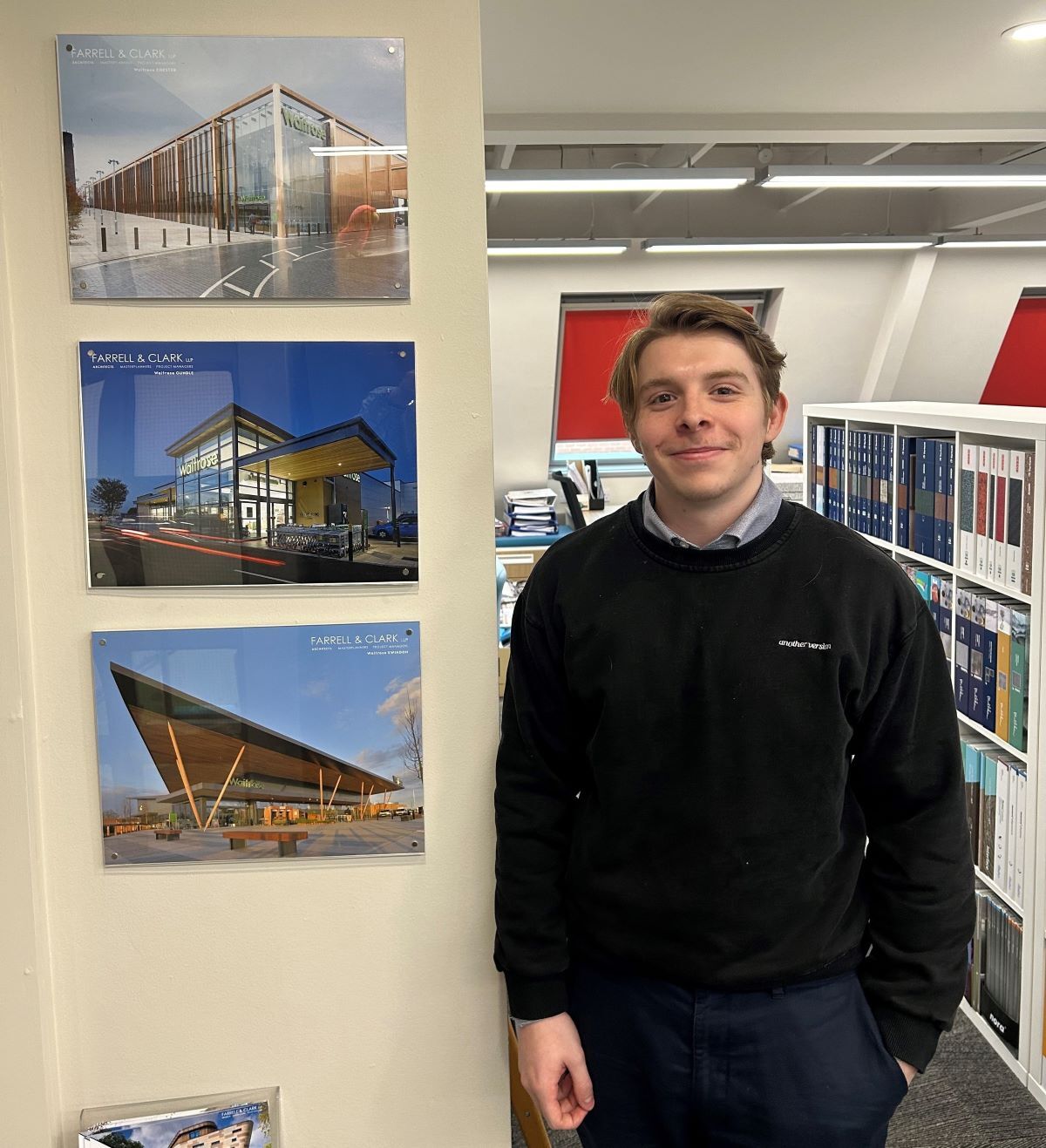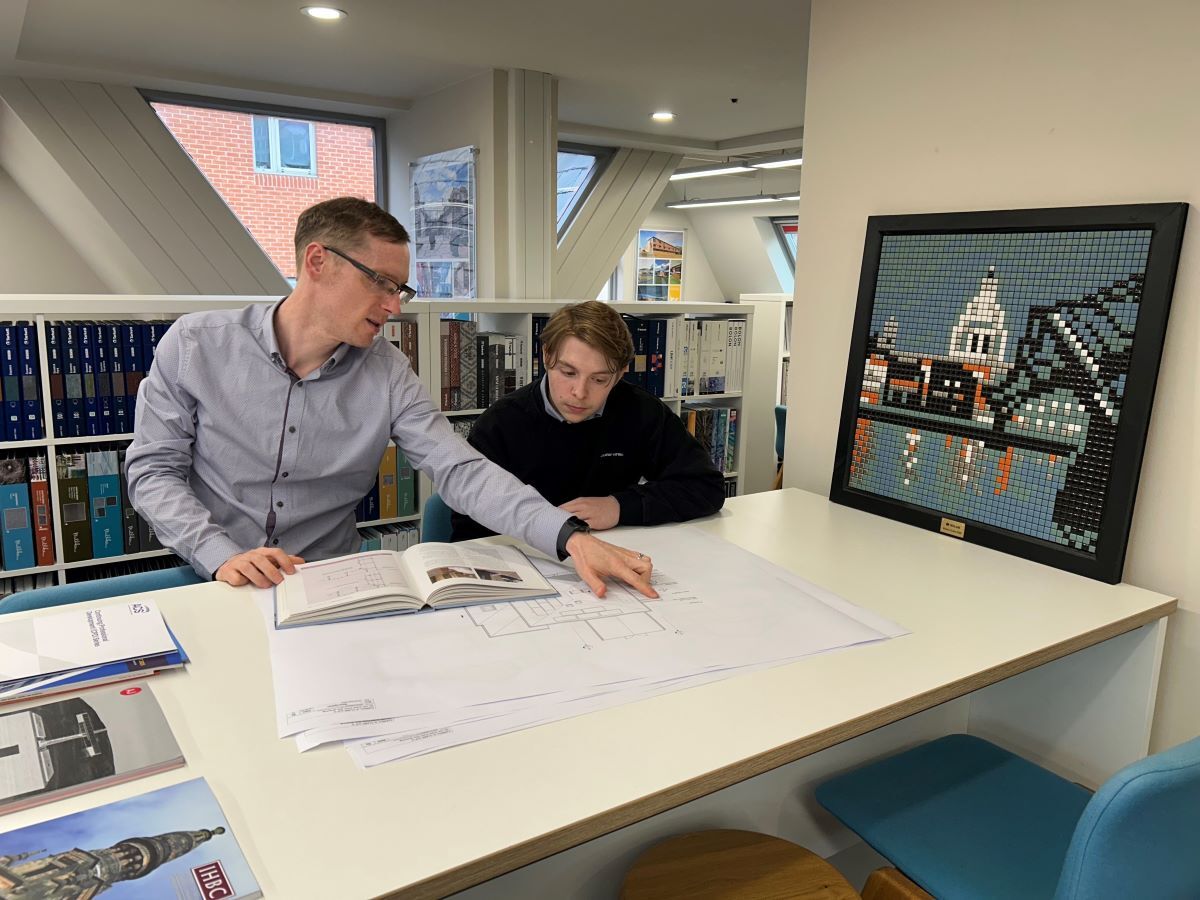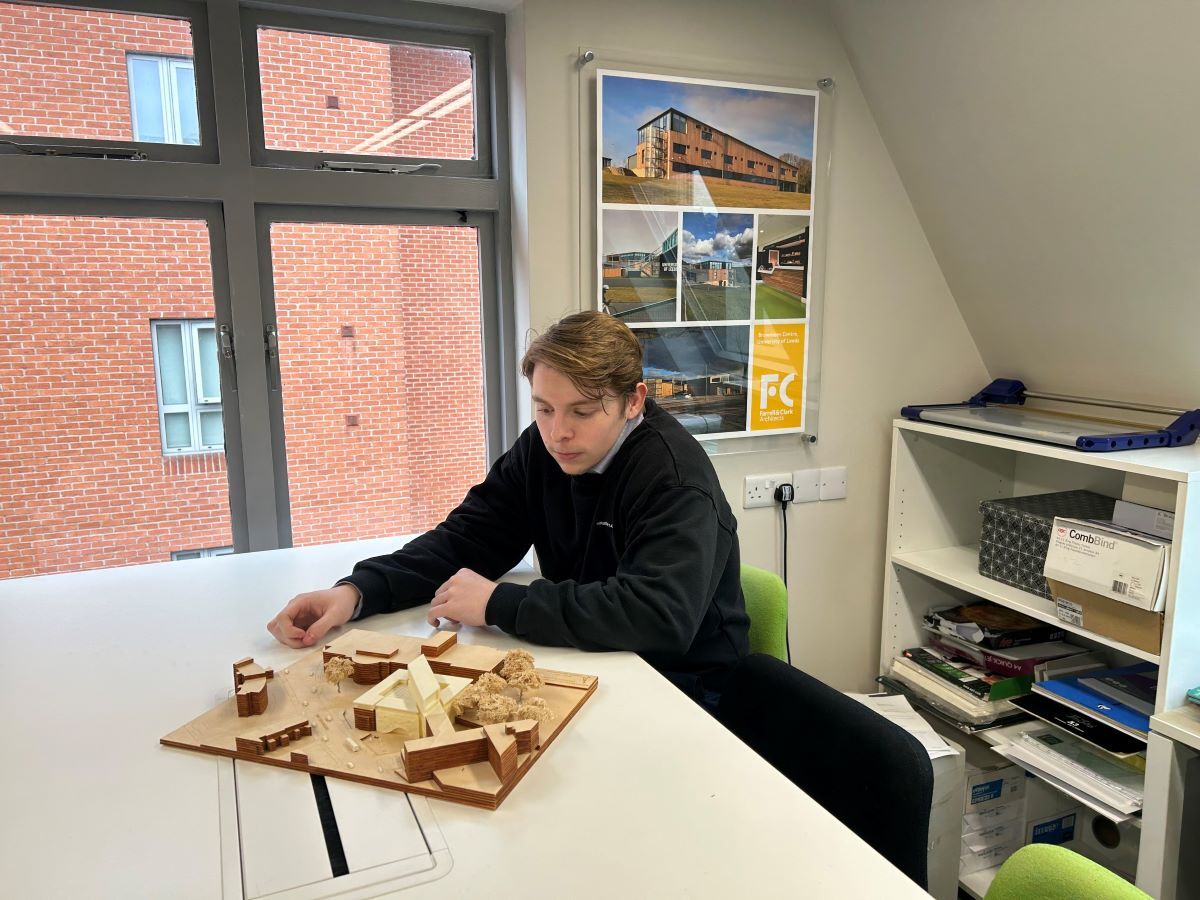
Charlie lands architect job and university place at end of his T Level studies
Some students enrol on a T Level knowing that it can provide a pathway into employment.
Others regard the qualification as a reliable route into university.
For Charlie Skinner, completing York College’s Construction Design, Planning and Surveying course has supplied an avenue into both.
Having left our Sim Balk Lane Campus this summer, Charlie was offered a part-time job with impressed placement providers Farrell & Clark – a Leeds-based architect firm whose clients include Waitrose, John Lewis, KFC, The Co-op, Premier Inn and Britvic, as well as a number of councils, sporting bodies and universities.
That two-days-a-week role will also prove a considerable contribution towards helping fund Charlie’s living expenses and lessening the debt incurred by most students during his four-year BArch (Hons) degree in Architecture at Sheffield Hallam University.
Charlie’s experience demonstrates the value of the T Level’s 315 work placement hours requirement in terms of enabling a student to showcase their employment potential.
“If you put effort into your placement and they like you, you can get asked to come back, like has happened with me,” Charlie pointed out. “I’m working two days a week and doing three days at university.
“It’s good to have money coming in and it’s helping pay for my accommodation and food.”
When considering his post-16 options, Charlie was drawn to the Construction Design, Planning and Surveying T Level due to the broad range of content covered, which can open the vocational doors into a number of professions, including architecture, architectural technology, quantity surveying, estimating, land surveying, site engineering, site management, project management and building surveying.
For Charlie, the course and placement confirmed that he wanted to pursue a career in architecture.

“I chose the T Level because I wanted to experience going on placement and getting out in the real world,” he explained. “With the course I did, there was also a lot of variety and I knew it would give me the option of progressing into different roles.
“I’ve always quite liked buildings but, when I went to College, it opened me up to liking them even more and, when I started coming on placement, that opened me up to what actually happens in the architectural industry and what the job involves. I came to College with kind of an idea of what I wanted to do and the course and placement helped me become more sure of I wanted to do.
“I know now that I want to become a fully-fledged architect and I would like to work on modern buildings that stand out a lot.”
Charlie added that the T Level model of classroom tuition blended with practical experience worked perfectly for him as he was able to apply and develop the skills he had first honed at College on the architecture software programme Revit in the office at Farrell & Clark on real-life projects.
“The teaching at College was very good,” he declared. “The tutors guided us but also let us do our own thing.
“The resources and facilities are good, too. We got out onto the field and used equipment, but a lot of the work we did was on computers with software like Revit and, by the end of the placement, I was inputting windows into designs using the Families tool on there.
“Again, I was given guidance when I needed at work, but I didn’t have my hand held all the way through either and was given the freedom to do my own thing and I’m a lot more confident now.
“With the placement, I’ve had to go into a big city and find my way around and it’s been good to learn from adults whilst I’m in the practice, too”
Ian Whalley – a Partner and Certified Passivhaus Designer at Farrell & Clark – supervised Charlie’s placement and expressed his admiration for College’s tuition of Revit.
He also extolled the T Level’s value in terms of providing a more accessible route into architecture, reasoning that the post-16 model is arguably equipping students with practical skills and experience that are superior to a university degree.

“There’s a whole debate surrounding ways into architecture and how that could be made easier and I think the T Level model does help the next generation of students along,” Ian declared. “Charlie was one of the first two T Level students we set on and we’ve had one more since because, for us, it’s all about educating the next generation.
“I did A Levels and went straight to uni, before going into practice 20 years ago and I had to kind of learn CAD (Computer-Aided Design) properly during the first year of my job, whereas Charlie has had the advantage of knowing how to use Revit, because the Revit skills that he had learned coming from College were really good.
“In fact, his knowledge is better than some of the students we get coming to us from university after three years and I think the T Level course has probably put him a step ahead of other students at the beginning of his university course, because he already knows quite a bit about technical designs and drawings. One of the first questions we asked him when he started his T Level placement was, ‘Do you know how to spin a Revit model?’ and he did.
“The Revit modules are clearly taught well, which means College are getting the fundamentals of the course right. He also had a good understanding of surveying, so it was kind of all about putting what he had learned into practice and building up those skills.
“The T Level model is very good, because getting that experience in an office is so valuable in terms of how much you can learn.”
Ian also reasoned that providing Charlie with a platform to showcase his workplace potential proved beneficial for both him and the company from a recruitment perspective.
“We knew what skills Charlie had and what he could do, so it was an easy decision for us to employ him when a vacancy became available,” Ian explained.
Charlie has now been assigned with producing construction tender drawings for a new Waitrose building project, including floor and ceiling plans using Revit.
On recommending the value of a T Level placement, Ian added: “I’d advise any architects’ firm to take a T Level student on placement, because it works both ways.
“As a company, you have a stream to employ somebody in the future whose skills you know. I also think there’s a social responsibility in regards to building the next generation.”
To learn more about our T Level in Construction Design, Surveying & Planning, please click here
For details on all of York College's T Level and vocational courses, visit here
Want to discuss any of our degree, higher-level, vocational, T Level and A Level courses or apprenticeships with our expert team of tutors and check out our state-of-the-art facilities? Then, please come along to our next Open Event. Details on dates can be found here

